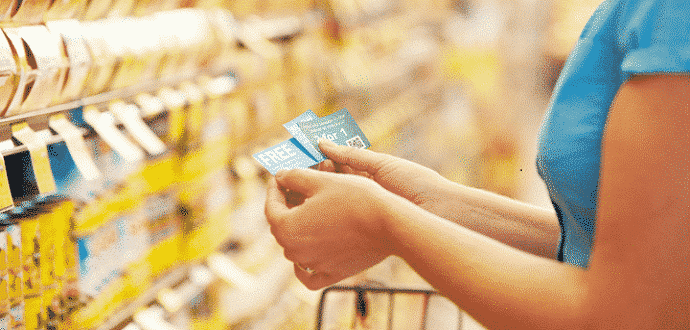Think that user-generated reviews on social media platforms such as Facebook and Yelp are the top factor behind consumers’ restaurant selections? Think again.
Despite the fact that you operate a restaurant in a hyperconnected, digitally driven society, recent research shows that deals and special offers still drive more than one-third of the conversation on where to eat out. Compare that to reviews, which only influenced 14 percent of diners, and it becomes clear that these proven promotional methods work.
Simply put, coupons and other promotions drive consumers to your restaurant. So, what’s the easiest way to promote your restaurant? By reaching your customers with formats they’re familiar with in areas they frequent, such as coupon advertising at their local grocery store. Coupons increase restaurant owners’ ability to deliver targeted, repetitive campaigns that increase exposure—all at the best bang for their advertising buck.
Despite the idea that coupons can help keep your restaurant profitable, there are still some misconceptions surrounding coupon advertising. To help clear the air, let’s look at some of the biggest misunderstandings.
Coupons Cut Into Profits Too Much to Have a Good ROI
One of the perceived challenges around coupon advertising is that you not only have to pay for the advertising itself, but then you take a double hit because the sale is smaller as well. This is particularly true for some of the large deal sites, such as Groupon, where they require a massive discount and then share the revenue. However, with a smart strategy around your coupon offer, you can really increase the perceived value of the coupon while making it quite profitable to have as many redemptions as there are customers!
Coupons get the most perceived value when they show actual dollar amounts instead of percentages. For example, $15 off a $30 or more purchase does better than offering 20% off the total price. What’s more, this type of coupon gives the impression of a 50% off deal. However, suppose your average sales ticket is more than $45. Then the actual discount will be less than 30% while the perceived value is still 50% off.
Tracking advertising ROI is hard. With TV, Billboard ads and other mass marketing, about the only way to check on ROI is to compare sales month over month. While digital advertising goes the other way and provides so much data, it can sometimes be difficult to know what to measure. One of the best features of coupon advertising is the easy method of tracking their performance: you get a coupon, it was a sale. This extra feature helps boost the value of coupon advertising as you know exactly how a particular offer, design and location is doing.
Coupon Marketing Only Attracts Deal-Hunters
One of the biggest misconceptions surrounding coupon advertising is that only deal-hunters, coupon-clippers, or low-income consumers use them. The truth is actually quite the opposite: Everyone Uses Coupons!
In fact, a reported 90% of all consumers use coupons. What’s more, a study by Washington University in St. Louis found that shoppers spent an extra $8 on unplanned luxury items for every $1 coupon they used. From lobster to lo mein, people feel more obliged to treat themselves after using coupons.
What does this mean for your restaurant? Whether you dabble in fine dining or quick-service concepts, coupons can draw in consumers from all backgrounds—including those with disposable income. Plus, because affluent consumers are more apt to use coupons, your steakhouse doesn’t run the risk of tarnishing its upscale image by advertising at your local grocery chain.
Coupon Advertising Cannot Be Personalized
Personalization is key when it comes to advertising and marketing campaigns. In fact, recent research found that 71 percent of consumers prefer ads that are tailored around their interests and shopping habits.
Coupon personalization really comes down to distribution, or simply, how do you get the coupon into the hands of customers? If you have a flexible medium for your coupon advertising, you will want to review your message every 3 months or so. This allows enough time to know if your campaign is working, but ensures that a flop is changed out to something more productive without dropping ROI.
For restaurants, a great way to try targeting is to look at grocery shoppers. The typical grocery store customer lives within three miles of their preferred grocery store, meaning receipt coupon campaigns enable restaurant owners to reach hyper-specific customers. This precise location targeting, combined with demographic information, allows restaurant owners to distribute your message to exactly the right audience and at an average grocery store, that means of 20,000 potential or existing customers will see your offer every week.
Ultimately, coupons entice new customers and reactivate old ones. Coupons also have the ability to expand or increase your market area; Coupon advertising enables restaurant owners to boost sales by targeting specific customers, products, or events. By delivering personalized promotions, consumers are likelier to visit your restaurant, spend money, and boost your profits.




 By Talitha Turkin
By Talitha Turkin
